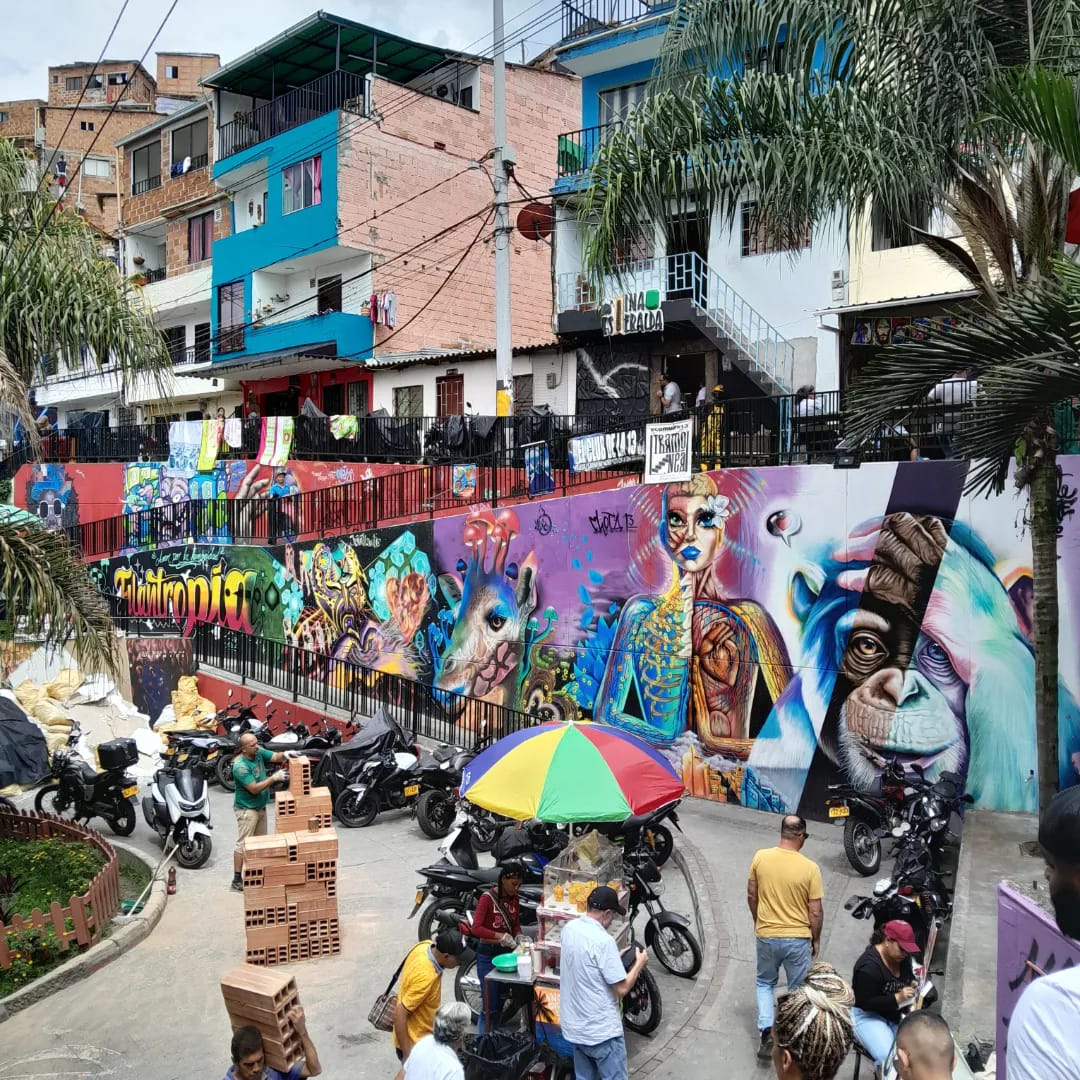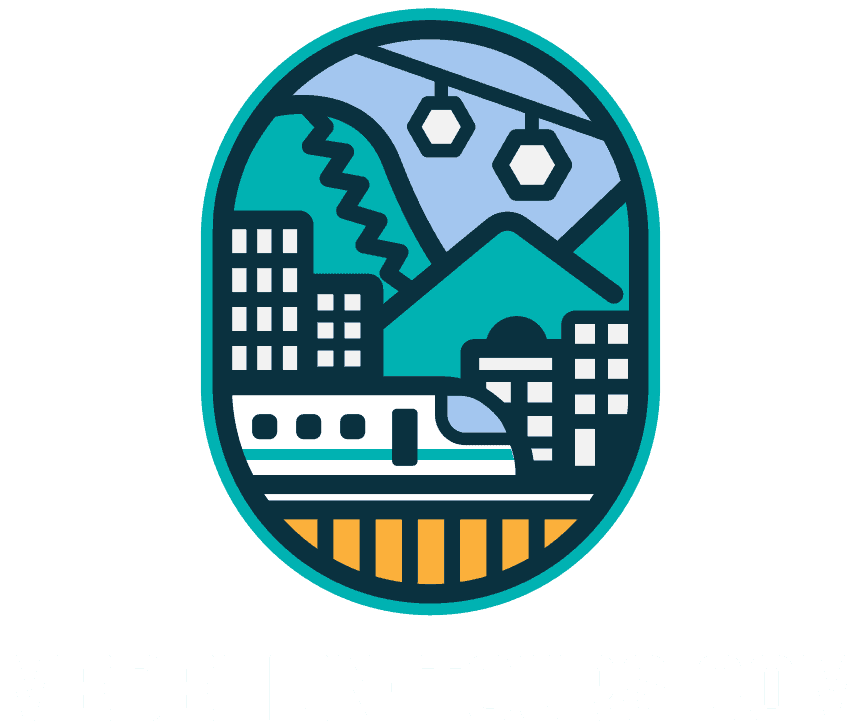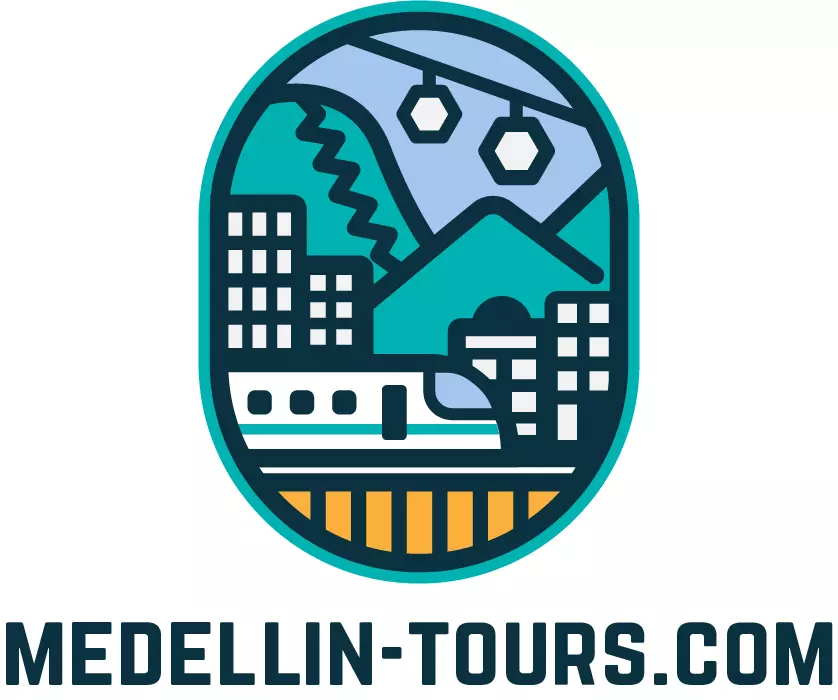
Nestled in the Aburrá Valley of the Andes Mountains, Medellin, Colombia’s second-largest city, is a vibrant metropolis known as the “City of Eternal Spring” for its pleasant, spring-like climate year-round. This city, which was founded in 1616 and officially became known as Medellin in the late 17th century, has a rich history that mirrors the dynamic evolution of Colombia itself. Once marked by turbulent times, Medellin has transformed into a global symbol of innovation and urban development.
Geographical and Demographic Overview
Medellin is the capital of the Antioquia Department and boasts a population of approximately 2.5 million residents as of the 2018 census, with the metropolitan area exceeding 4 million people. The city’s strategic location in northwestern South America’s Andes Mountains contributes to its unique climate and the lush, green landscapes that surround it. Medellin’s elevation at 1,495 meters (4,905 feet) above sea level plays a significant role in maintaining its moderate temperatures, which average between 16°C (63°F) and 28°C (82°F) throughout the year.
A Journey Through History
The city’s journey from a small indigenous village to a bustling urban center is a testament to its resilience and capacity for transformation. Medellin evolved from a gold-exporting town in the 19th century to a leading exporter of coffee. By the late 20th and early 21st centuries, Medellin had regained its industrial dynamism, significantly enhanced by the construction of the Medellin Metro, liberalized development policies, and improvements in security and education.
A Model of Urban Innovation
Medellin’s remarkable turnaround from its difficult past to a future-focused city is recognized worldwide. In 2013, the Urban Land Institute named Medellin the most innovative city in the world, highlighting its advances in politics, education, and social development. The city has also been honored with the Verónica Rudge Urbanism Award by Harvard University for its integral urban development projects and hosted the UN-Habitat’s 7th World Urban Forum in 2014. Moreover, in 2016, Medellin received the Lee Kuan Yew World City Prize, acknowledging its innovative urban solutions and sustainable development efforts.
A Beacon for Tourists and Expatriates
Medellin’s transformation has made it Colombia’s second most popular tourist destination, attracting approximately 1.4 million international visitors in 2022. The growth in tourism has been accompanied by a rise in the expatriate community, including retirees, workers, and digital nomads, drawn by the city’s safety, climate, and cultural richness.
Medellin’s journey from its historical roots to becoming a beacon of urban innovation and a favored destination for tourists and expatriates alike offers a compelling narrative of resilience, renewal, and rebirth.
The Transformation of Medellin: A Journey from Violence to Vibrancy
Medellin’s remarkable transformation is a testament to the city’s resilience and innovative spirit. Once known as the world’s most violent city in the early 1990s, Medellin has redefined itself through strategic urban planning and social urbanism, embodying a model of transformation that has attracted global attention.
Addressing Past Challenges
In the 1980s and 1990s, Medellin faced profound challenges, including extreme violence, social inequality, and urban segregation. The city’s homicide rate peaked at 381 homicides per 100,000 inhabitants in 1993, making it the most violent city globally at the time. This period of turmoil was characterized by the dominance of drug cartels and a deep divide between the city’s affluent areas and marginalized communities.
Strategies and Initiatives for Transformation
Medellin’s turnaround began in the 1990s with the introduction of innovative social urbanism policies, aiming to address the root causes of violence and inequality. Key initiatives included:
Integrated Urban Projects (PUIs): These projects combined transport, landscaping, street lighting, and cultural centers to revitalize the city. Notable projects under Mayor Sergio Fajardo’s administration included Parque Explora, the Botanical Gardens, and the renowned library-parks in various comunas of Medellin.
Public Transportation Innovations: The Medellin Metrocable, inaugurated in 2004, became a symbol of inclusion, connecting marginalized hillside communities with the city’s economic centers. The introduction of outdoor escalators in the San Javier neighborhood further exemplified the city’s commitment to enhancing mobility and breaking down physical barriers.
Education as a Pillar for Change: The administration also focused on education as a means to bridge social and economic gaps. Initiatives like “Medellin, la más educada” sought to harness education’s transformative power, from early childhood to primary levels, aiming to reduce poverty and inequality.
Impact on Local Communities and the Economy
The combination of urban development and social inclusion strategies significantly impacted Medellin’s landscape and its people. These interventions have:
- Reduced poverty and inequality, contributing to greater social inclusion.
- Enhanced connectivity and accessibility, integrating previously isolated neighborhoods into the city’s economic and social fabric.
- Boosted education and skills development, opening new pathways for economic opportunity and personal growth.
Medellin’s transformation has been recognized internationally, winning awards and serving as a model for cities worldwide facing similar challenges. However, while significant progress has been made, the journey continues as Medellin seeks to address remaining challenges in poverty, inequality, and social inclusion.
This extraordinary transformation, from a city besieged by violence to a beacon of urban innovation, demonstrates the power of integrated, community-focused urban planning and the indomitable spirit of the people of Medellin.
Cultural Highlights of Medellin
Medellin, known as the City of Eternal Spring, not only boasts a pleasant climate but also a rich cultural tapestry that weaves together art, music, and tradition. This vibrant cultural scene reflects the city’s transformation and resilience, offering visitors and locals alike a plethora of experiences that capture the spirit of Medellin.
Museums and Galleries
Museo de Antioquia stands as a pillar of Medellin’s cultural heritage, housing the most extensive collection of works by Fernando Botero, a world-renowned Medellin-born artist. Botero’s voluptuous sculptures adorn Plaza Botero, located outside the museum, turning the area into an open-air gallery that celebrates the artist’s unique style and contribution to Colombian culture.
The Modern Art Museum of Medellin showcases contemporary works by local and international artists, reflecting the city’s evolving art scene. With its innovative exhibitions and installations, MAMM offers insights into modern artistic expressions and dialogues.
Music and Festivals
Medellin’s music scene is as diverse as its people, spanning traditional genres like Vallenato and Cumbia to urban styles such as Reggaeton, which has seen a surge in popularity. The city’s nightclubs, bars, and concert venues pulse with live music, reflecting the rhythmic heart of the city.
Feria de las Flores (Flower Festival): Celebrated in August, this festival is a spectacle of color and beauty, showcasing the region’s rich floral heritage. The highlight is the Desfile de Silleteros, a parade where locals carry elaborate flower arrangements on their backs, symbolizing the strength and perseverance of the Antioquian people.
Alumbrados Navideños (Christmas Lights): Medellin’s Christmas lights are a dazzling display of creativity and innovation. The city is adorned with millions of lights, turning it into a wonderland that attracts visitors from all over the world. The lights along the Medellin River and at Parque Norte are particularly enchanting.
Street Art and Urban Transformation
Medellin’s street art is a canvas of the city’s history, transformation, and social commentary. The vibrant murals that decorate the city’s walls are not just expressions of creativity but also powerful narratives of Medellin’s past struggles and aspirations. Comuna 13, once a symbol of the city’s violence, has been reborn as a center of artistic expression, with its escalators not only connecting communities but also serving as galleries for graffiti and street art that tell stories of resilience and hope.
Through these cultural expressions, Medellin tells its story, from turbulent times to a future bright with creativity and pride. The city’s museums, music, festivals, and street art offer a glimpse into the heart of its people, celebrating a culture that is as diverse as it is vibrant. Whether you’re exploring the rich collections of its museums, swaying to the rhythm of its music, participating in its colorful festivals, or admiring the creativity of its street artists, Medellin’s cultural scene invites you to experience the depth and diversity of this extraordinary city.
Outdoor and Recreational Activities in Medellin
Medellin offers a ton of outdoor and recreational activities that cater to nature enthusiasts, adventure seekers, and those looking to enjoy the city’s green spaces. From the lush landscapes of Parque Arví to the tranquility of urban parks, Medellin provides diverse options for visitors to explore its natural beauty and engage in various activities.
Natural Surroundings and Adventure
Parque Arví is a natural oasis offering a breath of fresh air from the city’s hustle. Parque Arví is renowned for its hiking trails, picnic areas, and the unique opportunity for bird watching, with Colombia being one of the most biodiverse countries for bird species. Adventure activities such as ziplining and horseback riding are also available, providing thrilling experiences amidst stunning natural landscapes.
Hiking and Paragliding: The mountainous terrain around Medellin makes it an ideal location for hiking enthusiasts. Trails of varying difficulty levels offer scenic vistas and encounters with the region’s flora and fauna. For those seeking an adrenaline rush, paragliding over the verdant valleys provides a bird’s-eye view of the breathtaking surroundings, offering a unique perspective on the area’s natural beauty.
For those looking to spend at least a night under the stars, glamping in Medellin offers the perfect getaway. From the privacy of your own bubble you can taste the local foods and sip wine from your own hot tub. These glamping locations are a piece of paradise and with year-round great weather it’s a great choice to surround yourself in nature for an extended period of time!
Urban Green Spaces and Outdoor Activities
The Botanical Garden (Jardín Botánico) is a serene getaway within the city, showcasing a wide variety of plants and ecosystems. This green space is not only a place for relaxation but also education, with guided tours that highlight the importance of biodiversity and conservation. The garden’s orchid collection and butterfly house are particularly popular, drawing visitors into the intricate beauty of nature.
True to its name, Barefoot Park encourages visitors to remove their shoes and connect with the earth. This urban park is designed around the concept of natural elements – sand, water, and grass – providing a tactile experience that promotes relaxation and mindfulness. The park’s zen-inspired layout and bamboo forest offer a peaceful retreat in the heart of the city.
Parques Del Rio is a prime example of urban integration with nature, featuring pedestrian and cycling paths, green spaces, and cultural venues. Parque de los Deseos is a hub for cultural and educational activities, offering a space for relaxation and community gatherings.
Cerro Nutibara is a small hill in the heart of Medellin, offering easy trails and a fantastic view of the city from the top. The clear waters of Rio Claro are ideal for swimming, rafting, and kayaking, surrounded by lush jungle scenery.
For more extreme sports, Medellin’s surrounding areas offer zip-lining experiences through jungles, canyons, and waterfalls, providing stunning vistas and an adrenaline rush. Explore deep valleys and steep mountain sides on an ATV, with Medellin tours available that include jungle excursions to see local wildlife. For a bird’s eye view of the city and its surroundings, paragliding is a must-do. Glide through the air and enjoy unparalleled views of Medellin’s landscape. The rivers near Medellin, like Rio Verde and Rio Calderas, offer thrilling whitewater rafting experiences with Class III and IV rapids. With numerous trails and mountainous terrain, mountain biking is an exhilarating way to explore the area’s natural beauty.
Medellin’s commitment to preserving its natural surroundings and providing green spaces within the urban landscape allows residents and visitors to enjoy a variety of outdoor activities. Whether it’s exploring the ecological wonders of Parque Arví, hiking in the Andes, experiencing the thrill of paragliding, or simply enjoying a quiet moment in the city’s botanical or barefoot parks, Medellin offers endless opportunities to connect with nature and indulge in recreational activities. These green spaces and activities not only enhance the quality of life but also reflect the city’s ongoing efforts to promote environmental sustainability and awareness.
Gastronomy and Nightlife
Medellin’s gastronomy is a reflection of its rich cultural heritage, offering a palette of flavors that range from traditional dishes to innovative culinary experiences. When it comes to traditional dishes, Medellin has a variety to offer. Bandeja Paisa, a hearty platter that includes beans, rice, chicharrón, avocado, arepa, and more, stands as the city’s most emblematic dish, symbolizing the Paisa culture’s abundance and hospitality. Arepa Paisa, another staple, is a versatile cornbread that can be stuffed with cheese, butter, or various meats, making it a delicious treat any time of the day. Mazamorra, often served with panela or guava paste, offers a sweet contrast to the savory dishes prevalent in the city. Calentado and Empanadas are other must-tries, showcasing the Colombian knack for turning simple ingredients into mouthwatering meals.
For those keen on exploring these culinary delights, Medellin boasts a large selection of restaurants and eateries in various neighborhoods. The Laureles zone, for instance, is recommended for those wanting to indulge in authentic Arepa Paisa at places like Mi Arepa La 80, or for trying a variety of empanadas at Empanadas Boomerang. Meanwhile, Restaurante El Desayunadero is praised for its traditional Calentado, a perfect hearty breakfast to start your day.
Medellin’s nightlife adds another layer to its cultural richness, with neighborhoods like El Poblado and Laureles standing out as popular spots. El Poblado, known for its upscale bars, clubs, and live music venues, offers a vibrant atmosphere that caters to a diverse crowd. Laureles, on the other hand, provides a more laid-back experience with its array of cafes, traditional eateries, and bars, perfect for those looking to enjoy a night out in a more relaxed setting.
Sustainable Tourism in Medellin
Medellin is emerging as a leading example of sustainable tourism, embracing practices that not only enhance the visitor experience but also conserve its rich cultural and natural heritage. Here’s how the city is making strides in sustainable tourism and how you, as a visitor, can contribute positively.
Medellin is integrating sustainable tourism into its planning and development, ursemphasizing the conservation and sustainable use of its resources. This includes supporting local economies, involving local communities in the tourism sector, and adopting eco-friendly practices. The city promotes responsible marketing of tourism, ensuring that visitors receive accurate and responsible information, enhancing their respect for natural, social, and cultural environments. Additionally, ongoing research and monitoring help solve problems and bring benefits to both the destinations and the tourists.
How Visitors Can Contribute
Visitors can contribute to Medellin’s sustainable tourism by choosing eco-friendly accommodations, engaging in responsible travel practices, supporting local businesses, and minimizing their carbon footprint. Engaging with local cultures respectfully, opting for public transport, and participating in conservation efforts are ways tourists can make their visit more sustainable.
Eco-friendly Accommodations and Tours
For those looking to stay in places that are committed to sustainability, Medellin offers eco-friendly resorts and lodges designed with environmentally friendly materials, utilizing renewable energy sources, and implementing responsible waste management practices. Sustainable camping is also an option, with a range of eco-friendly camping gear available for minimizing impact on the environment.
In terms of tours, Medellin provides opportunities to engage with local communities and culture through sustainable tourism initiatives. These initiatives aim to support local economies, preserve cultural heritage, and protect the environment. By participating in these tours, visitors can have authentic and immersive experiences that also contribute positively to the local community.
Conclusion
Medellin has journeyed through a history of transformation, emerging as a global symbol of resilience, innovation, and sustainable urban development. Once grappling with violence and social inequality, it has reinvented itself into a beacon of urban innovation, attracting tourists and expatriates with its spring-like climate, rich cultural tapestry, and forward-looking urban planning. This transformation is marked by strategic interventions in social urbanism, public transportation, education, and community-focused projects that have significantly reduced poverty and inequality, while enhancing the city’s connectivity and social fabric.
Medellin’s cultural scene, from its museums and festivals to its street art and music, tells a story of rebirth and community strength. The city’s commitment to sustainable tourism and outdoor activities offers both residents and visitors a chance to engage with its natural beauty and urban innovation in environmentally conscious ways. Gastronomy and nightlife further showcase the city’s diverse cultural heritage, offering a palette of flavors and experiences that reflect the spirit of its people.
The ongoing journey of Medellin is a testament to the power of integrated urban planning and the community’s indomitable spirit, serving as an inspiration for cities worldwide facing similar challenges. As it continues to address challenges and foster sustainable growth, Medellin stands as a model of how cities can transform adversity into opportunity, making it not only a vibrant place to visit but also a profound example of urban resilience and renewal.







